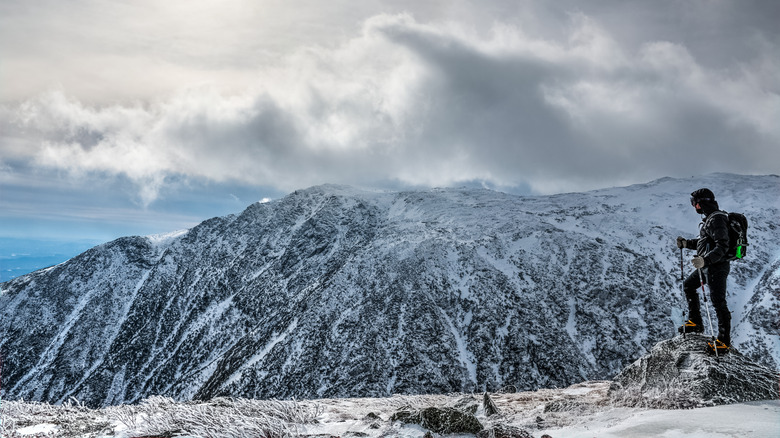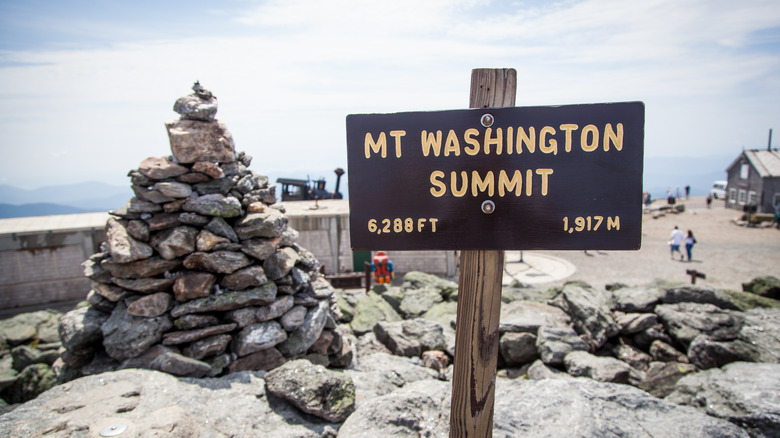The Dangers Associated With Visiting Mount Washington
Given its size, New Hampshire's Mount Washington isn't usually one of the first to jump to someone's mind when naming the most dangerous mountains in the world. The mountain's peak comes in at 6,288 ft., per New Hampshire State Parks, and on a clear day, the view from the summit can stretch for 130 miles in any direction, offering views of Maine, Vermont, New York, Massachusetts, Quebec, and even the Atlantic Ocean. However, there's never a guarantee that it will be a clear day on Mount Washington's summit.
While some of the other dangerous mountains around the world like Mount Everest and K2 are known for their treacherous terrain and their high altitude, that isn't necessarily the case with Mount Washington. The mountain's peak is comparatively low but it still carries dangers that have earned it the reputation of the deadliest small mountain in the world.
While there are ways to get to the summit of Mount Washington like hopping a ride on the mountain's cog railway, hiking remains a popular option. However, this is the easiest way to be caught out by the mountain's most dangerous feature: its unpredictable and fearsome weather.
Mount Washington has some of the worst weather in the world
Mount Washington is the tallest peak of the White Mountains, which, according to Britannica is a part of the Appalachian Trail. Another one of the mountain's distinctions is that it has what has been called the worst weather in the world.
According to Outside, hikers have been caught up in avalanches and suffered hypothermia en route to the summit — and more than a hundred people have lost their lives during their trek. While it could be a clear day at the base of the mountain, the weather at the top of the mountain can be vastly different, with winter-like conditions being common for most of the year, per Only In Your State. According to Outside, there have been cases of hikers beginning their trek wearing shorts and t-shirts only to encounter chilling temperatures and succumbing to hypothermia halfway up the mountain.
There are no trees on Mount Washington's peak, which allows winds to whip across it unimpeded. This has led to the fastest winds ever recorded, an unbelievable 231 miles per hour, observed in 1934, per Britannica. Mount Washington sits among major storm tracks and air mass routes, according to New Hampshire State Parks, which when coupled with the mountain's topographic features and altitude, creates the high winds that have become its trademark. These winds have even blown hikers off of ridges.

